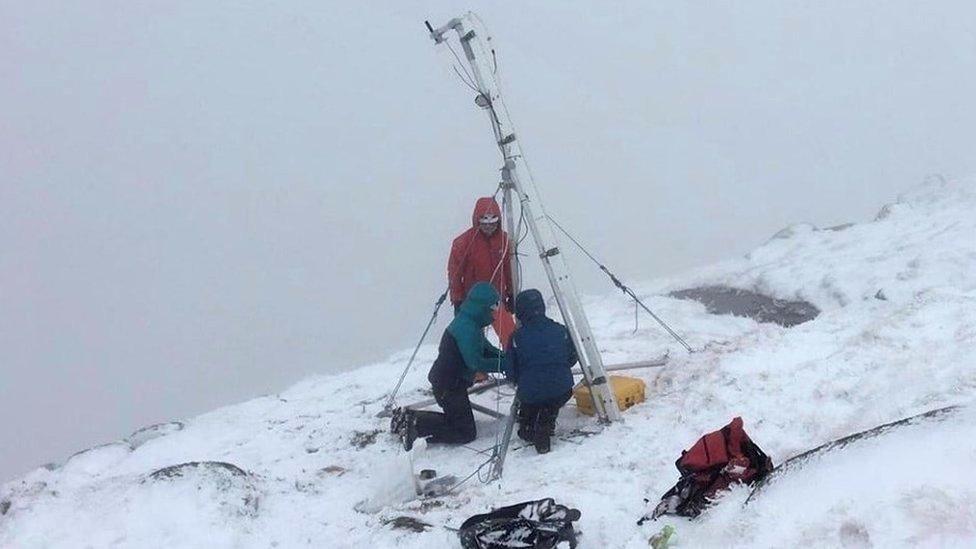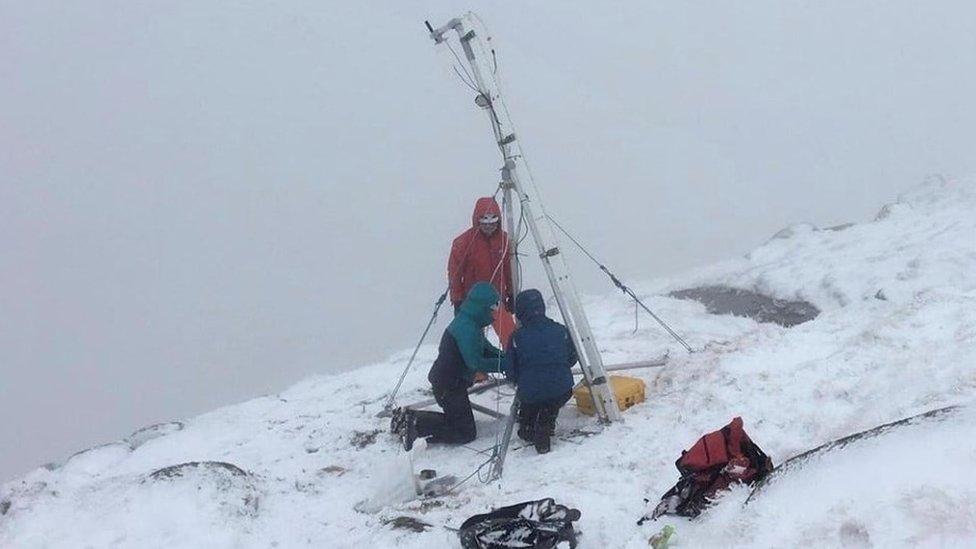Arctic tech in Cairngorms could give early warning of floods
- Published

The equipment has been installed in Glen Feshie in the Cairngorms
Scientific equipment originally designed for use in the Arctic has been developed as a device that could help give early warnings of floods.
Oban-based Scottish Association for Marine Science (Sams) has erected its array in the Cairngorms.
Data it gathers on thawing snowfields could help scientists better understand the contribution of snow-melt in floods.
Avalanche risk forecasters also hope to use the information in their work.
Sams' equipment was inspired by technology called Snow and Ice Mass Balance Arrays (Simba), which are typically used to measure sea ice thickness in the Arctic.
The kit has been installed in Glen Feshie near Kingussie.
'Challenging environment'
Sams is working with the Scottish Avalanche Information Service , the Scottish Environment Protection Agency (Sepa) and the University of Dundee on the use of the array for monitoring snow depth and the rate it melts.
David Guthrie, head of enterprise at Sams, said: "In a time of rapid change in our climate, it has become increasingly important to gather accurate data and create predictive models that give agencies the earliest forecasts possible.
"Thanks to this collaboration, we have an opportunity to test Simba in a challenging environment such as the Cairngorms, as we explore its potential for assessing flood and avalanche risk."
Dr Andrew Black, a hydrologist at the University of Dundee, added: "Snow melt is notoriously difficult to predict accurately because of the variability of snow depths and the difficulty in collecting relevant data.
"Studying snow melt in the Feshie catchment complements our existing monitoring of rainfall and river flows in that area.
"Snow which melts on the mountains of this area of the Cairngorms will take at least three hours to reach the River Feshie. This project shows the potential of improved monitoring to inform river flow predictions."
- Published30 October 2019
